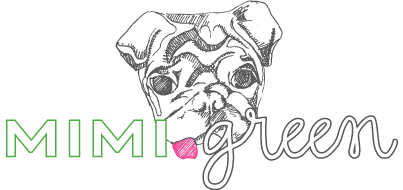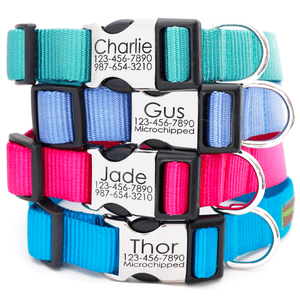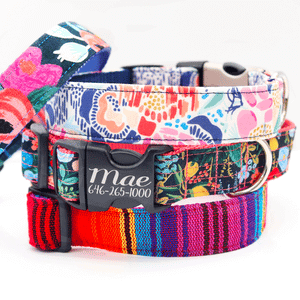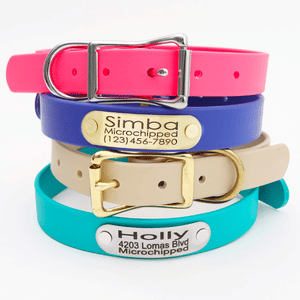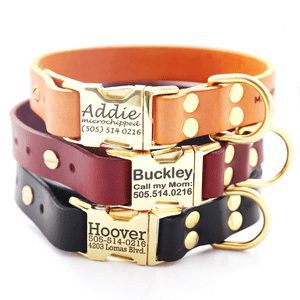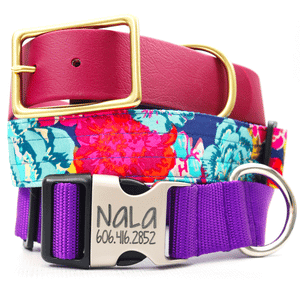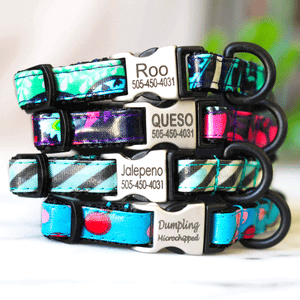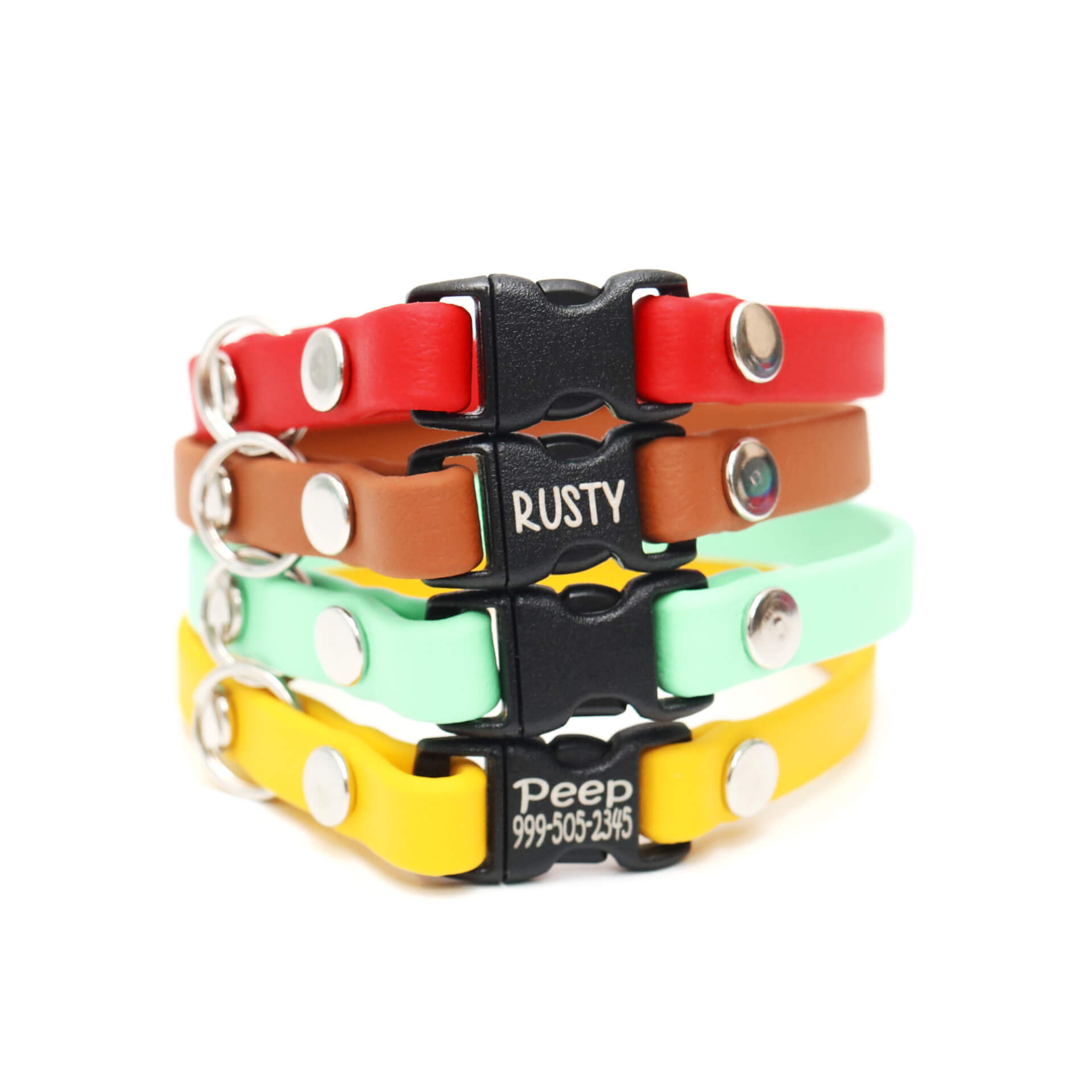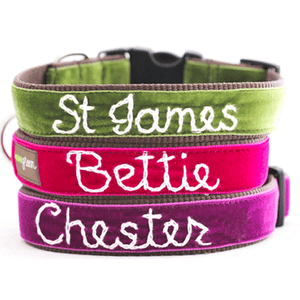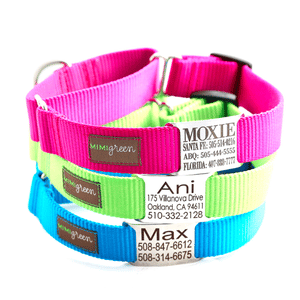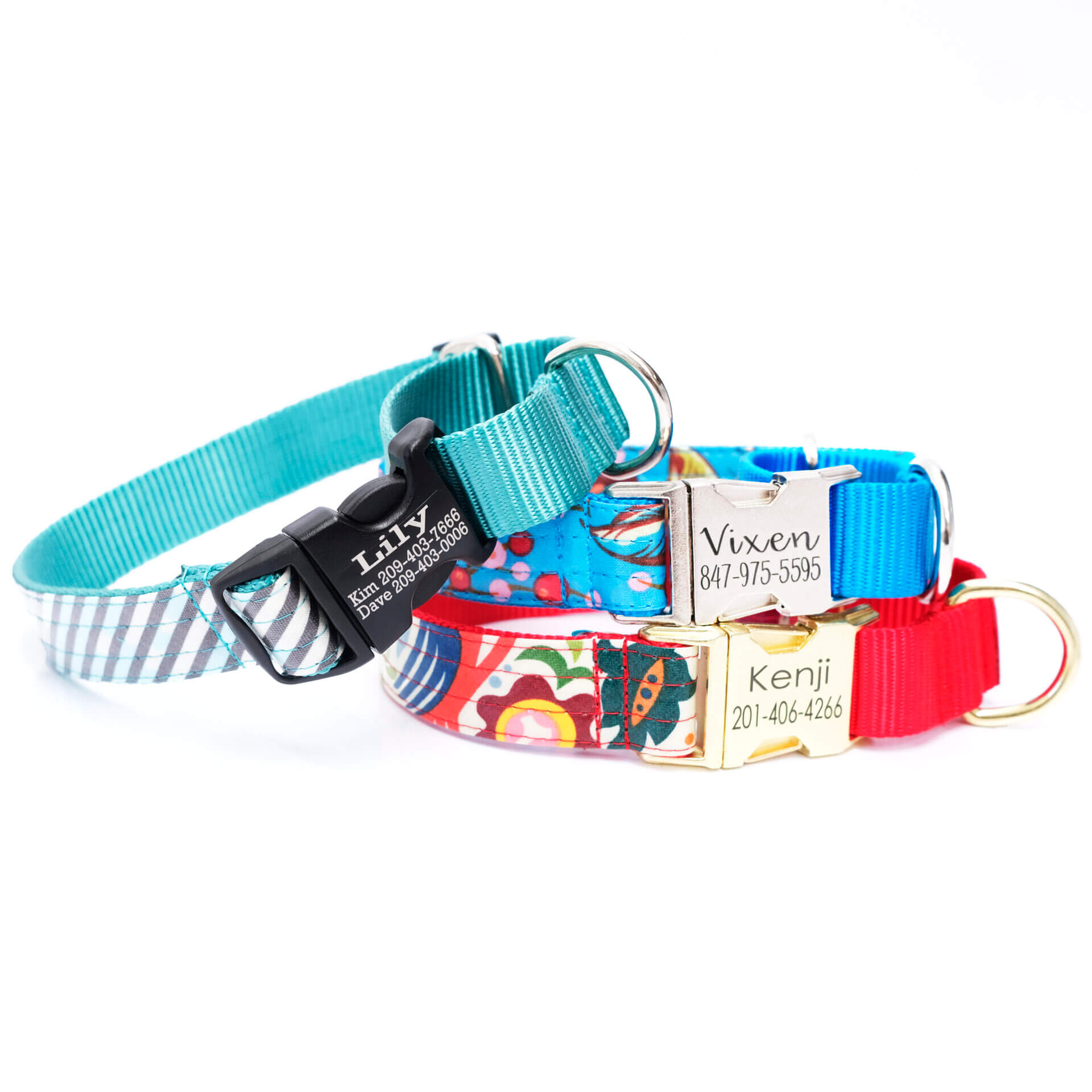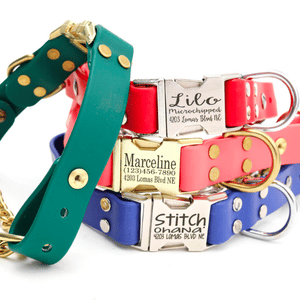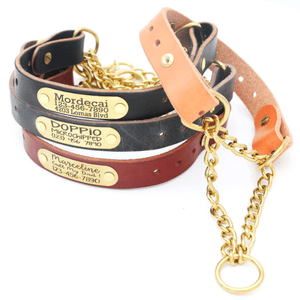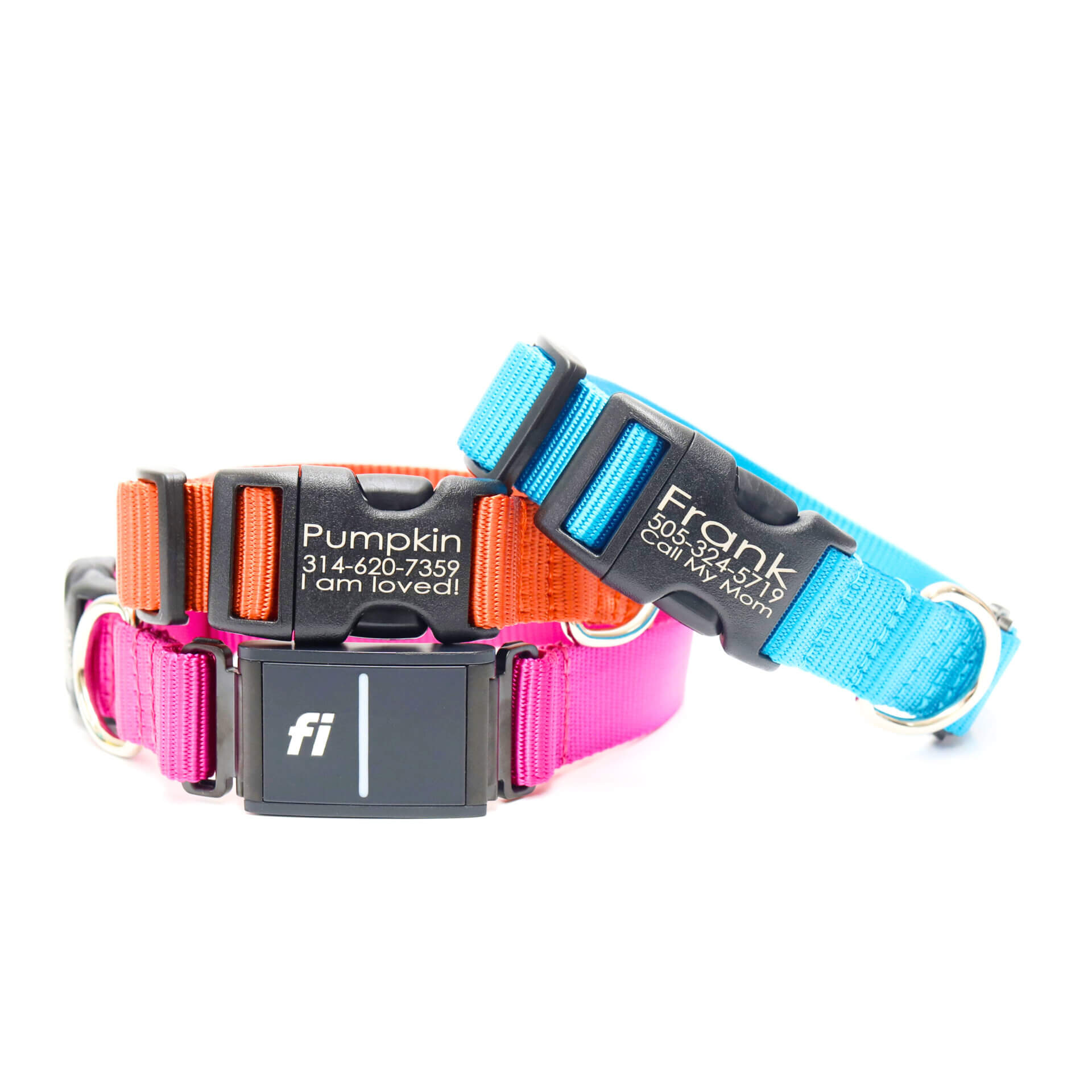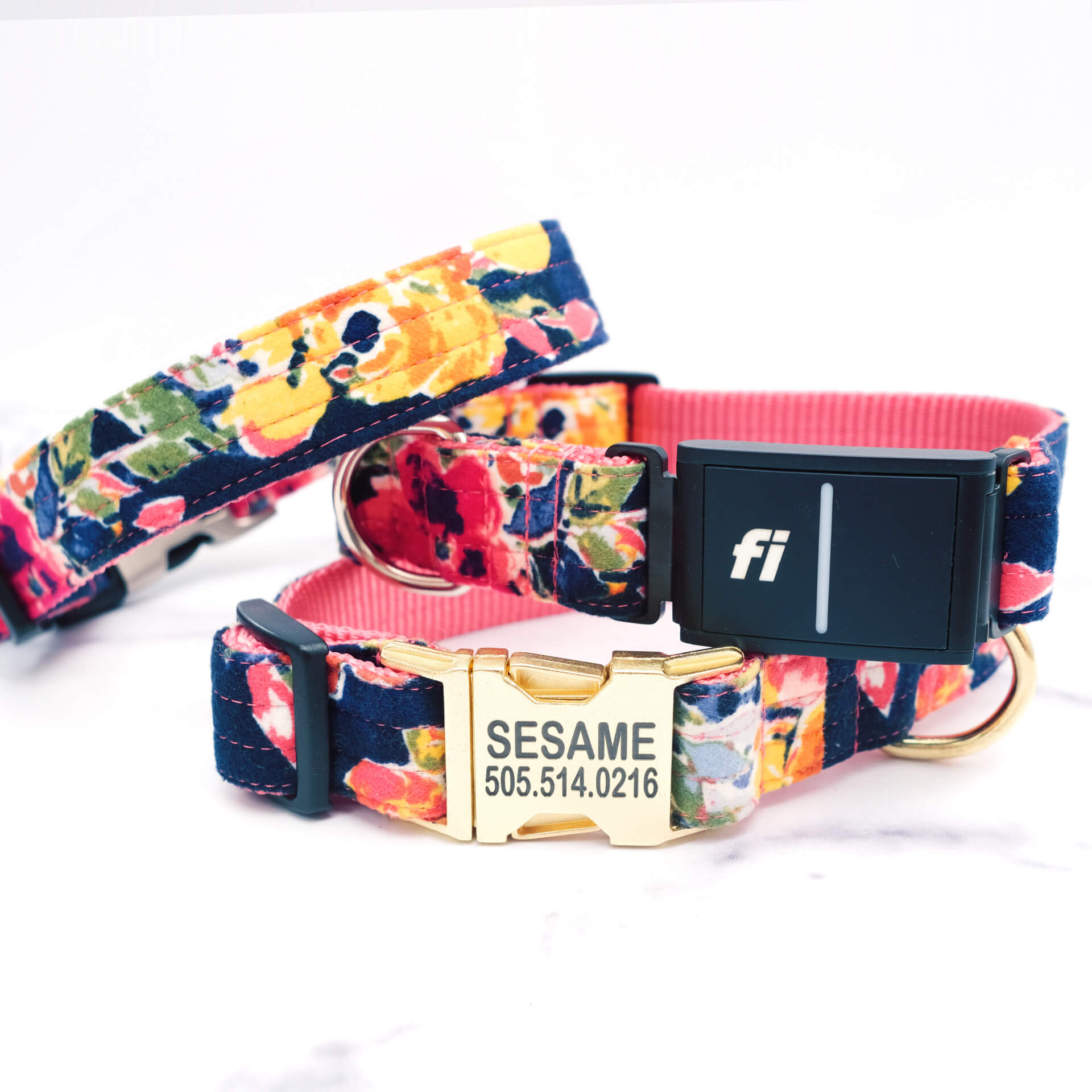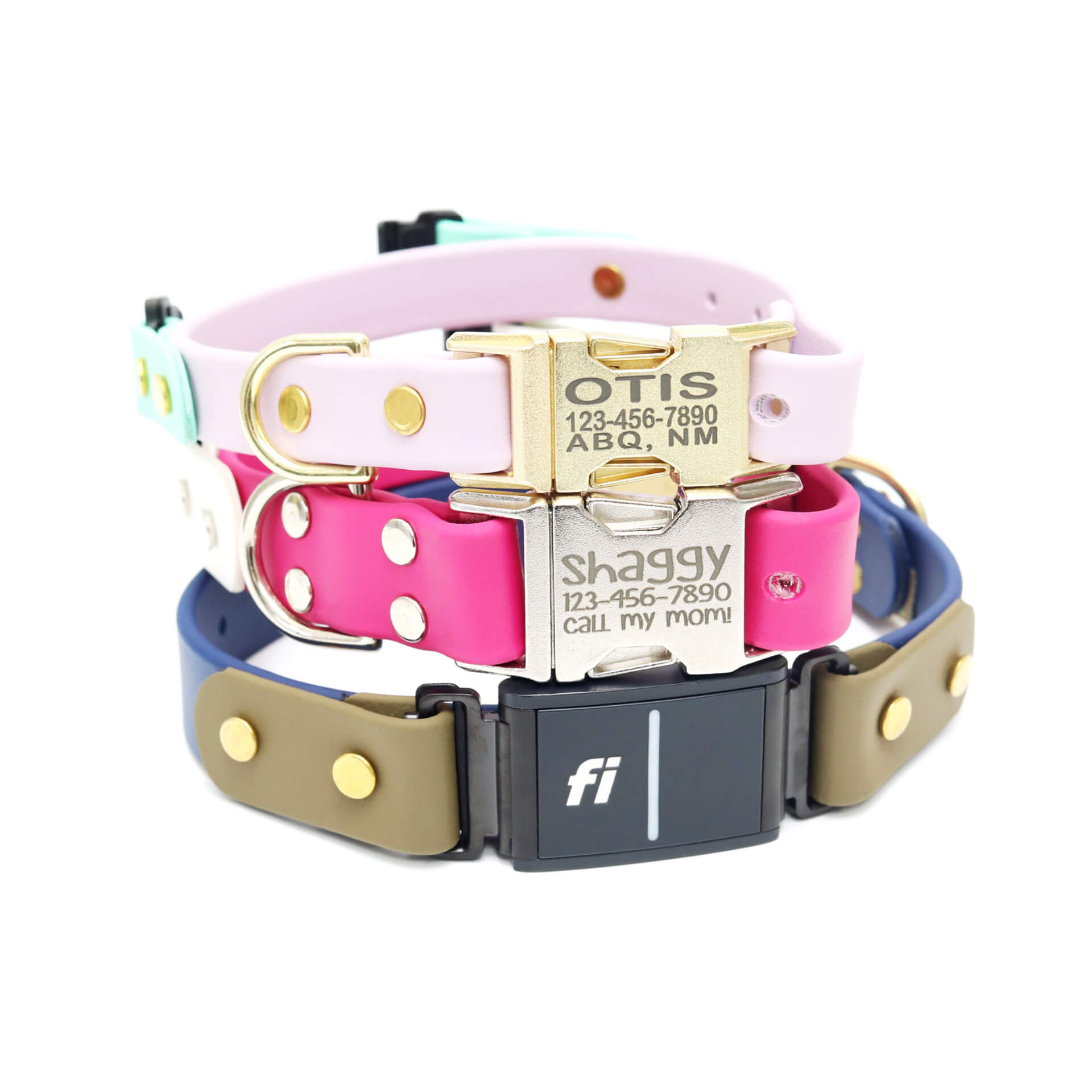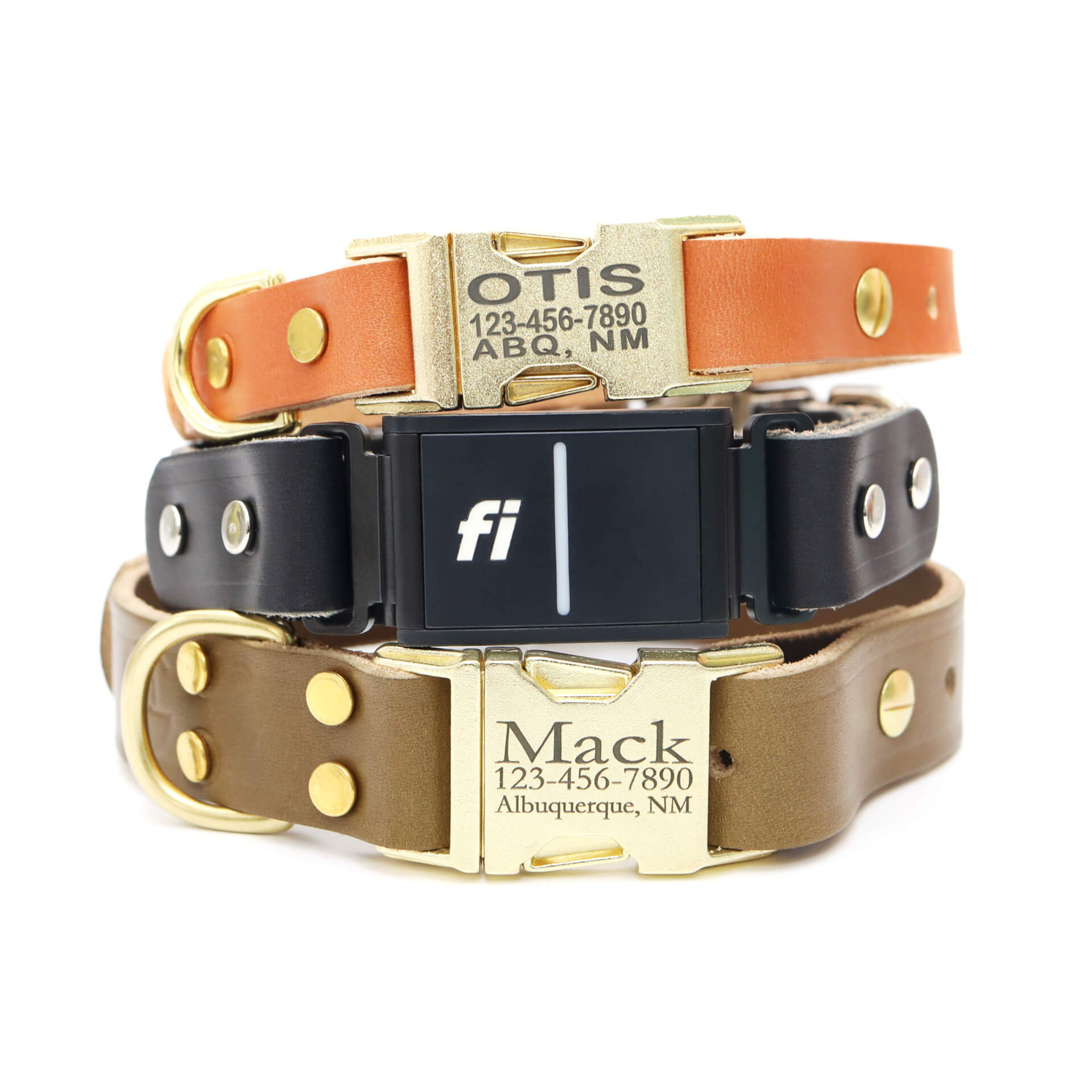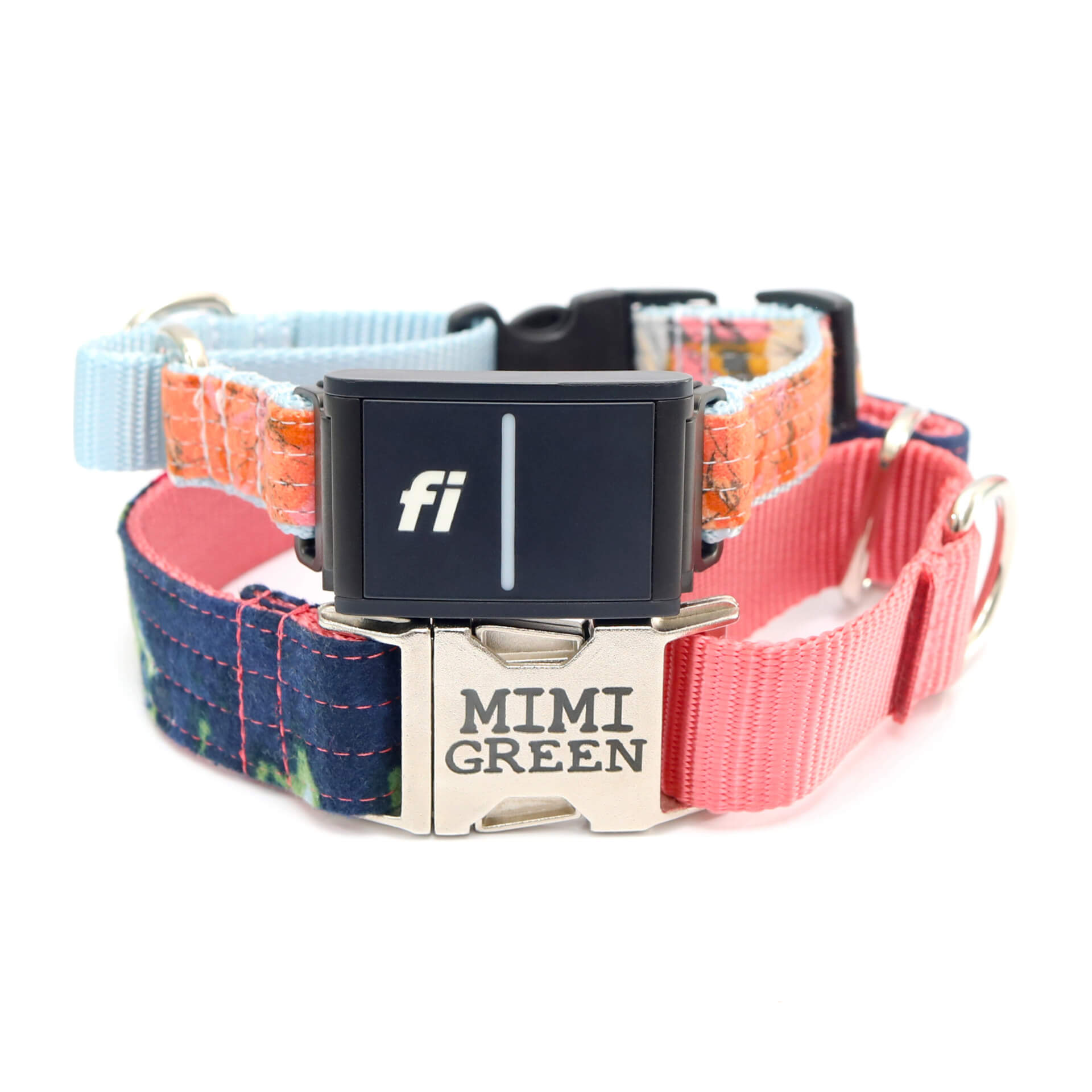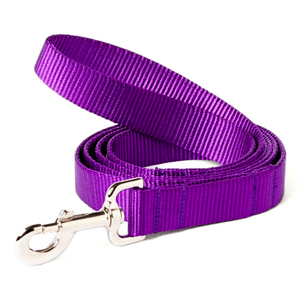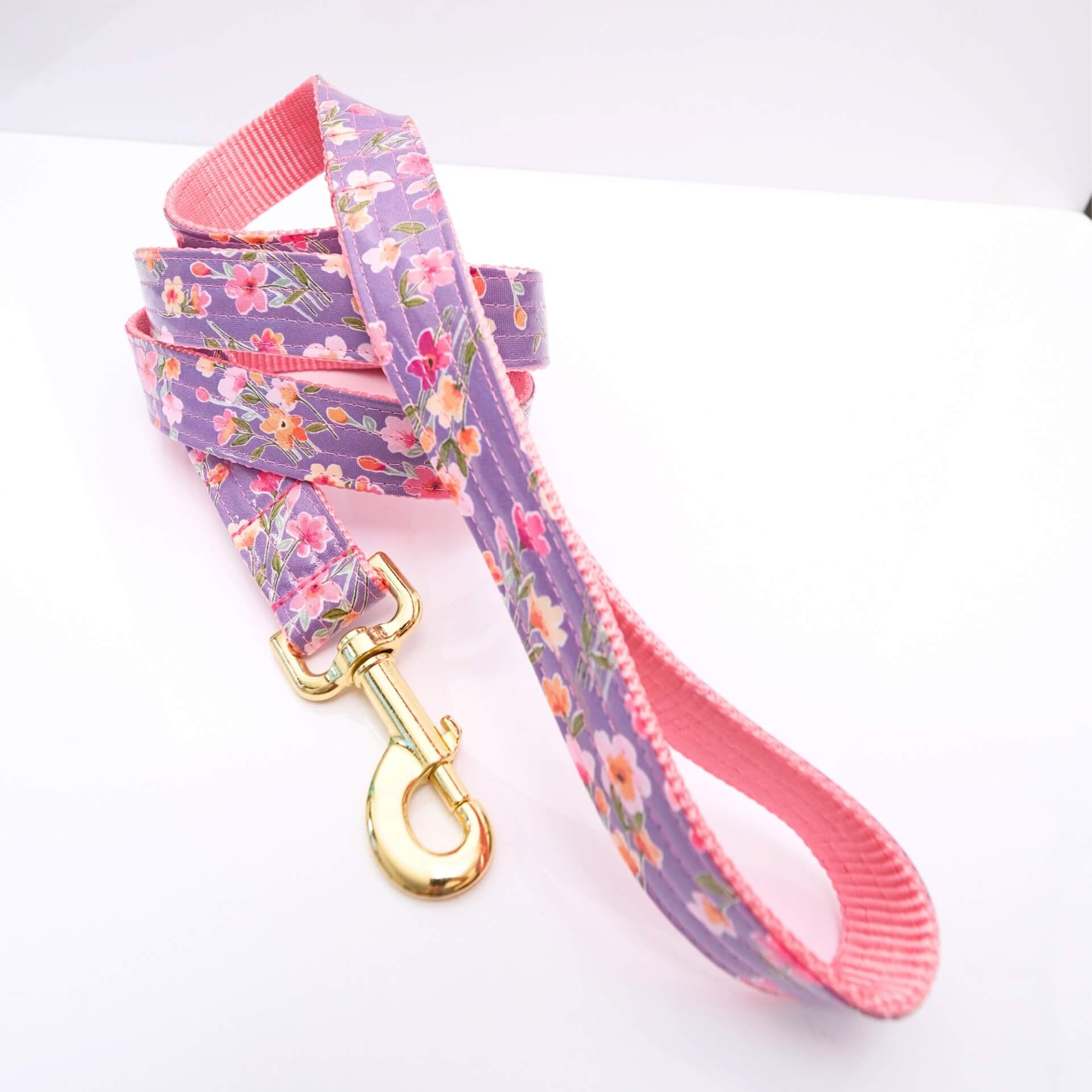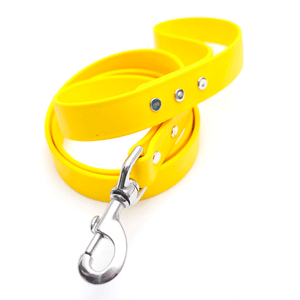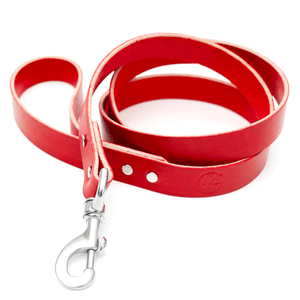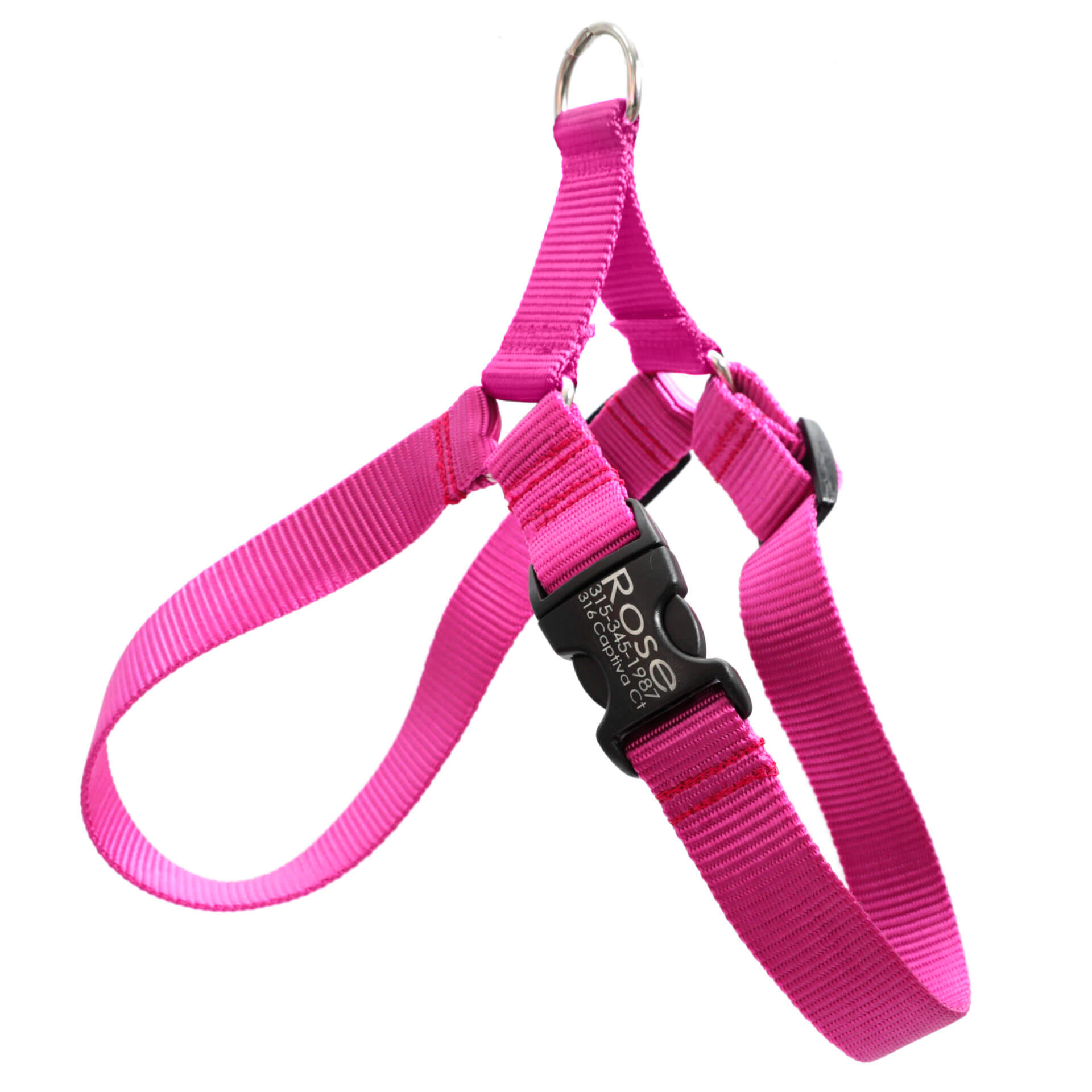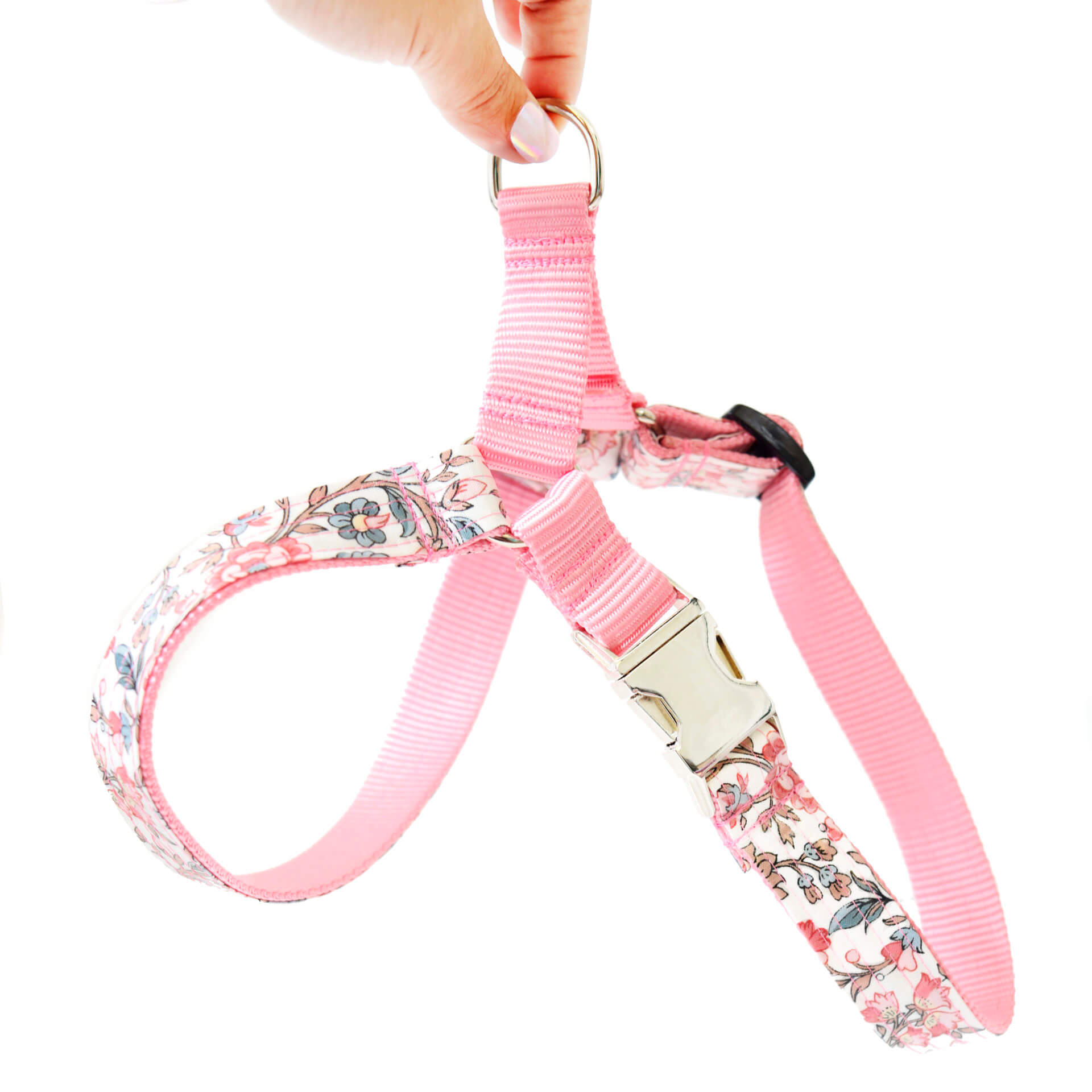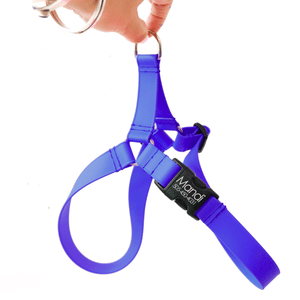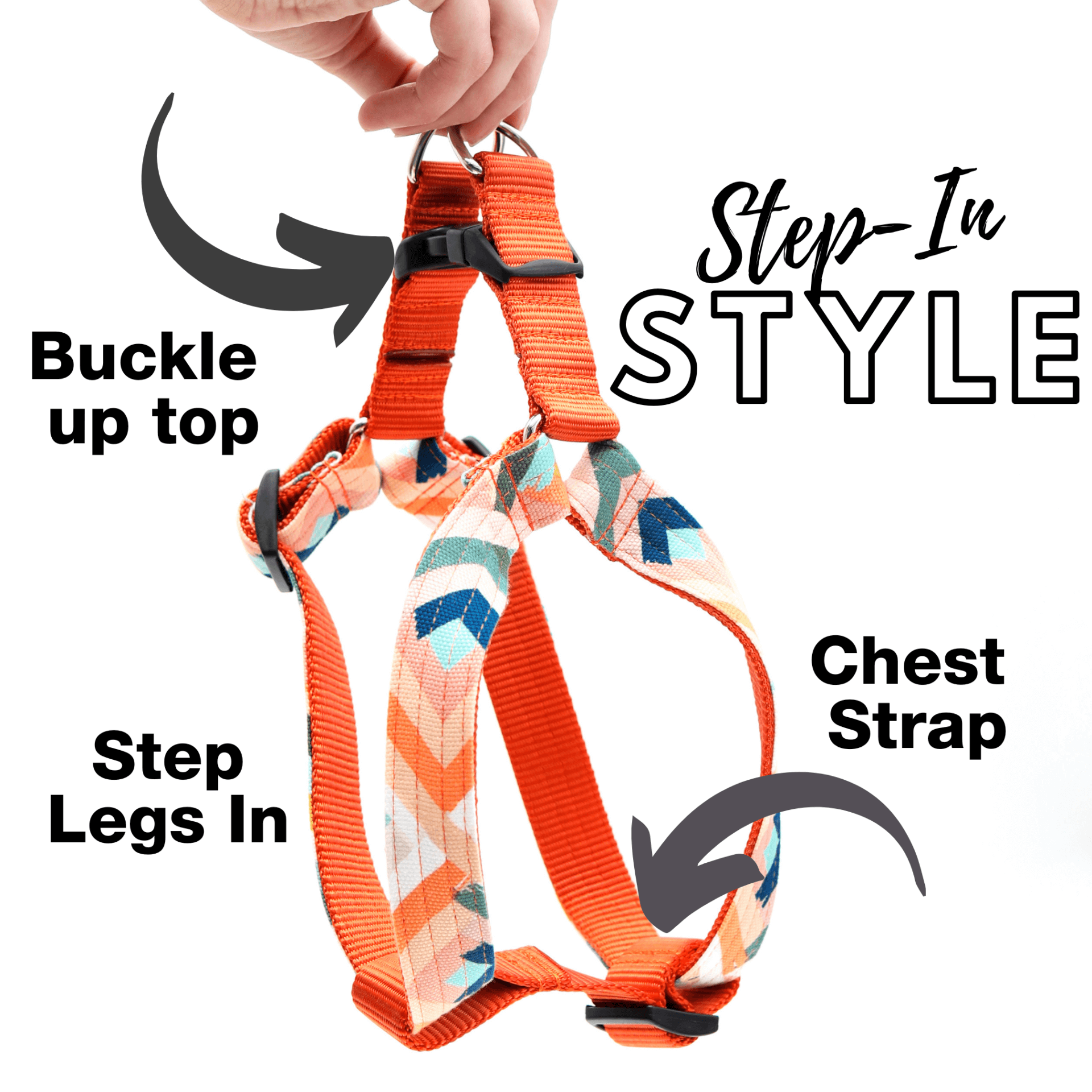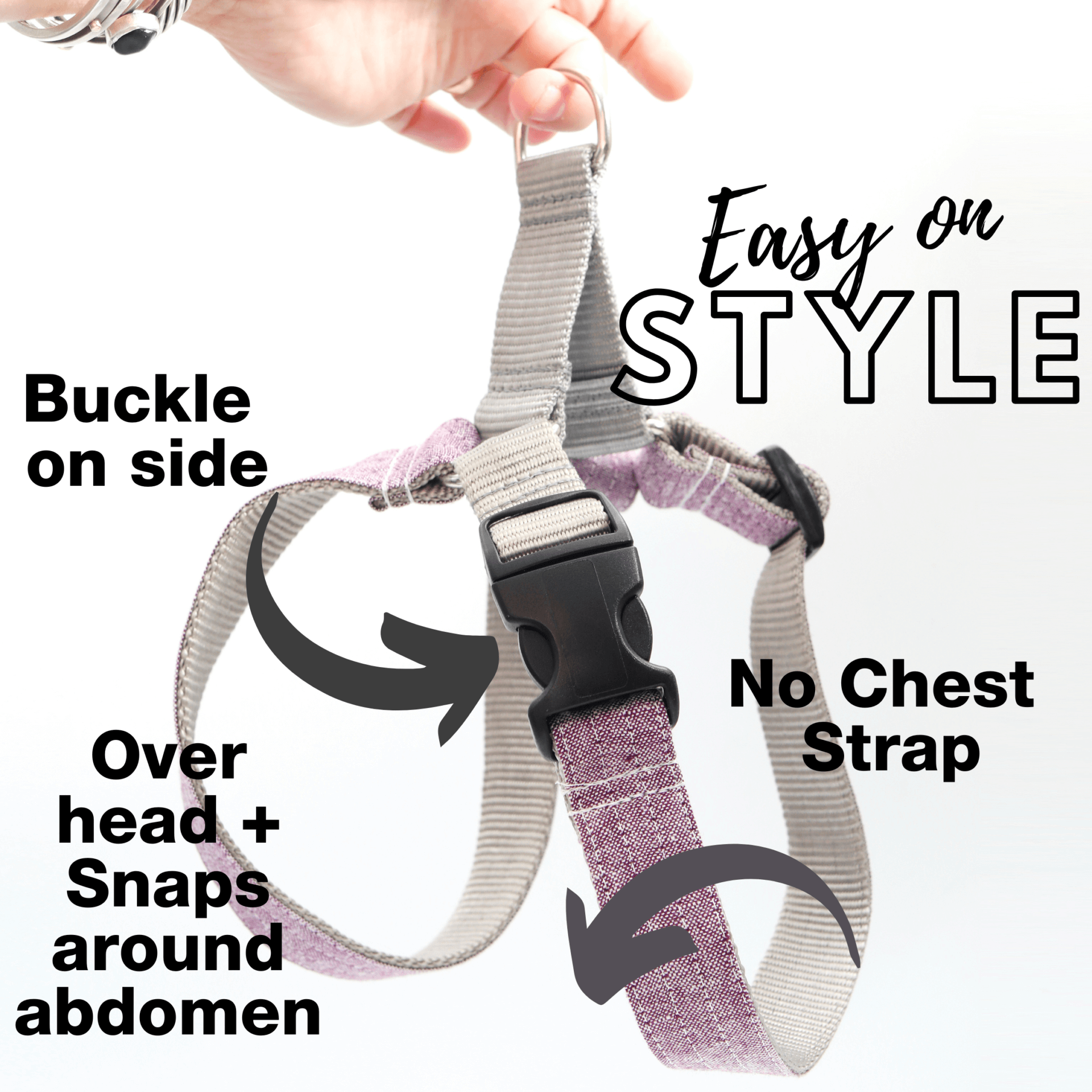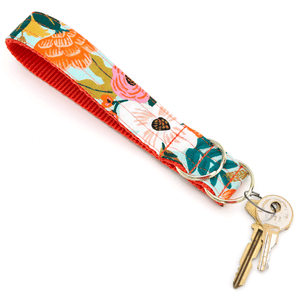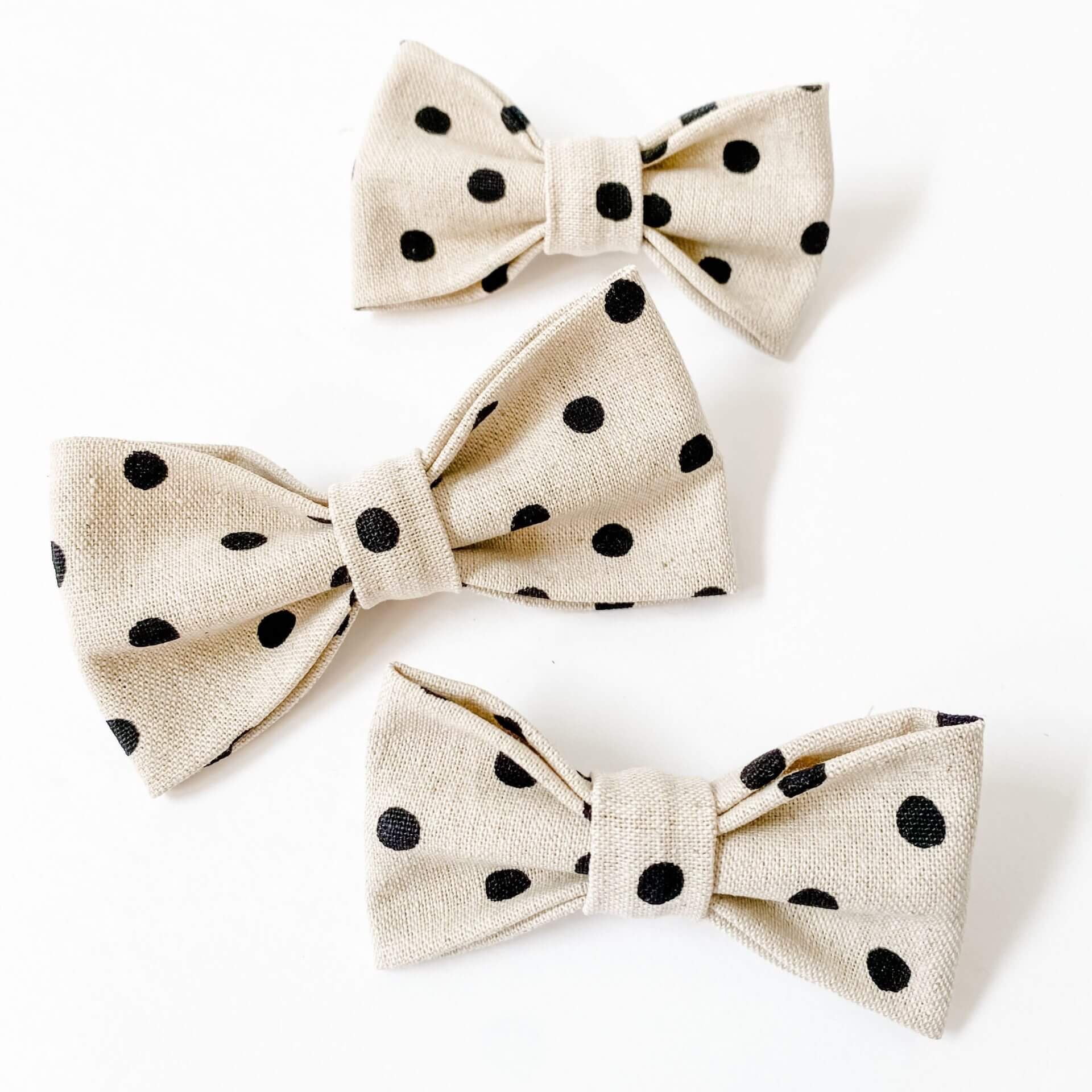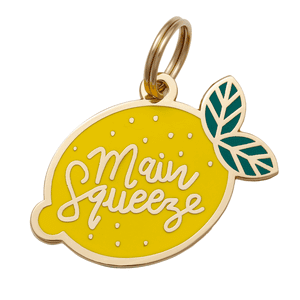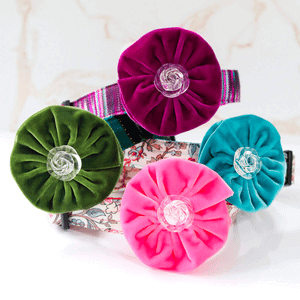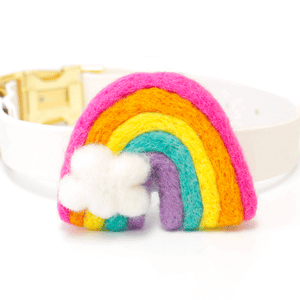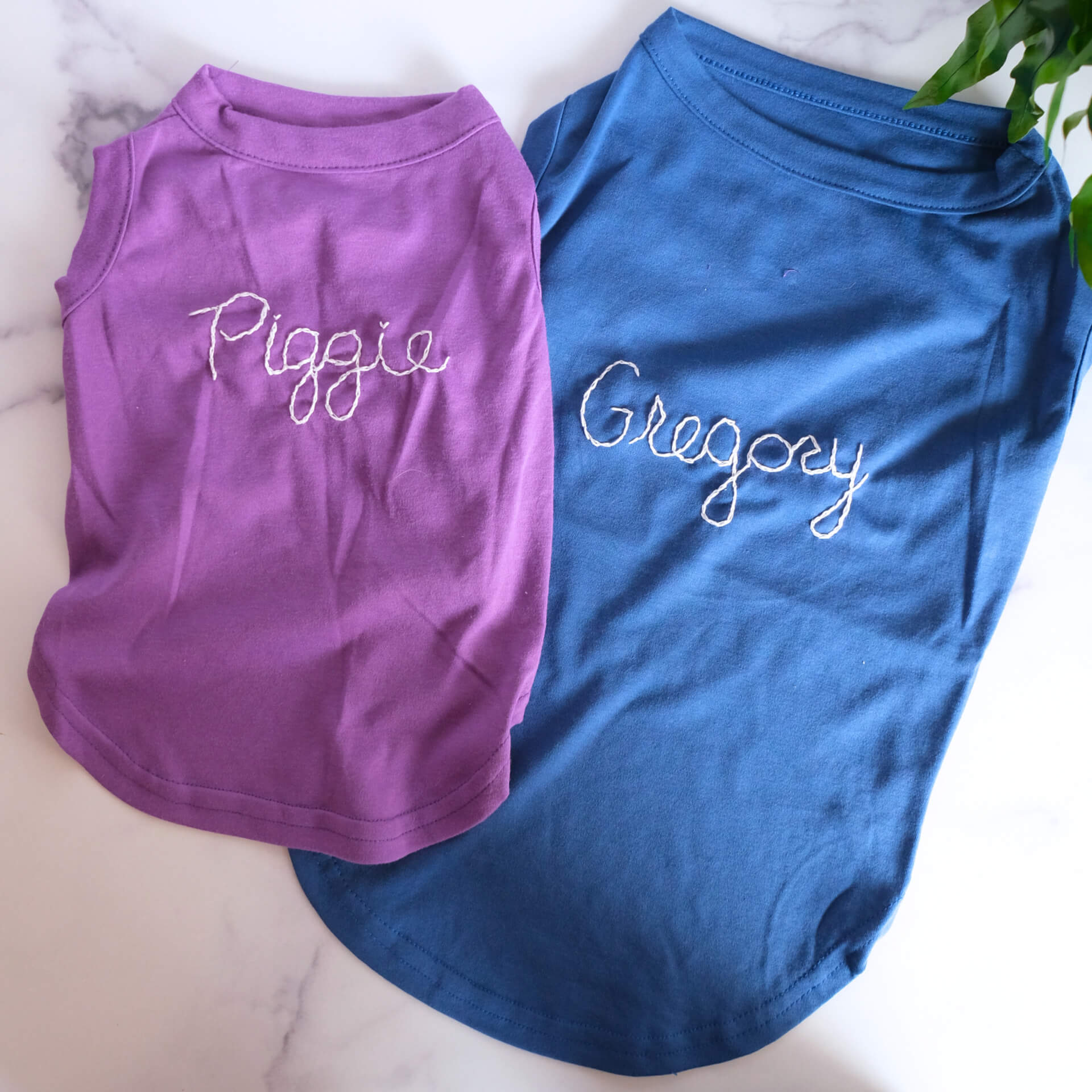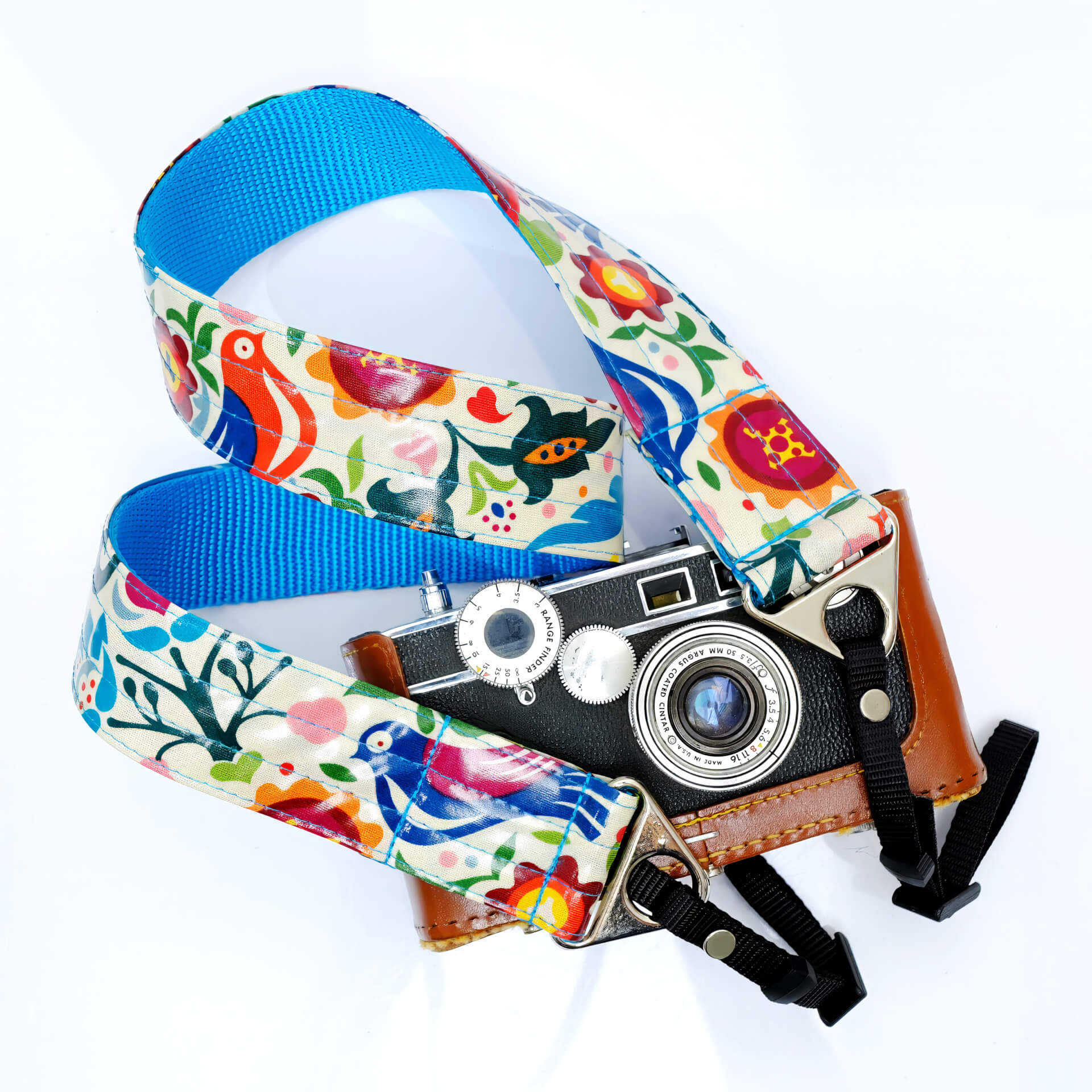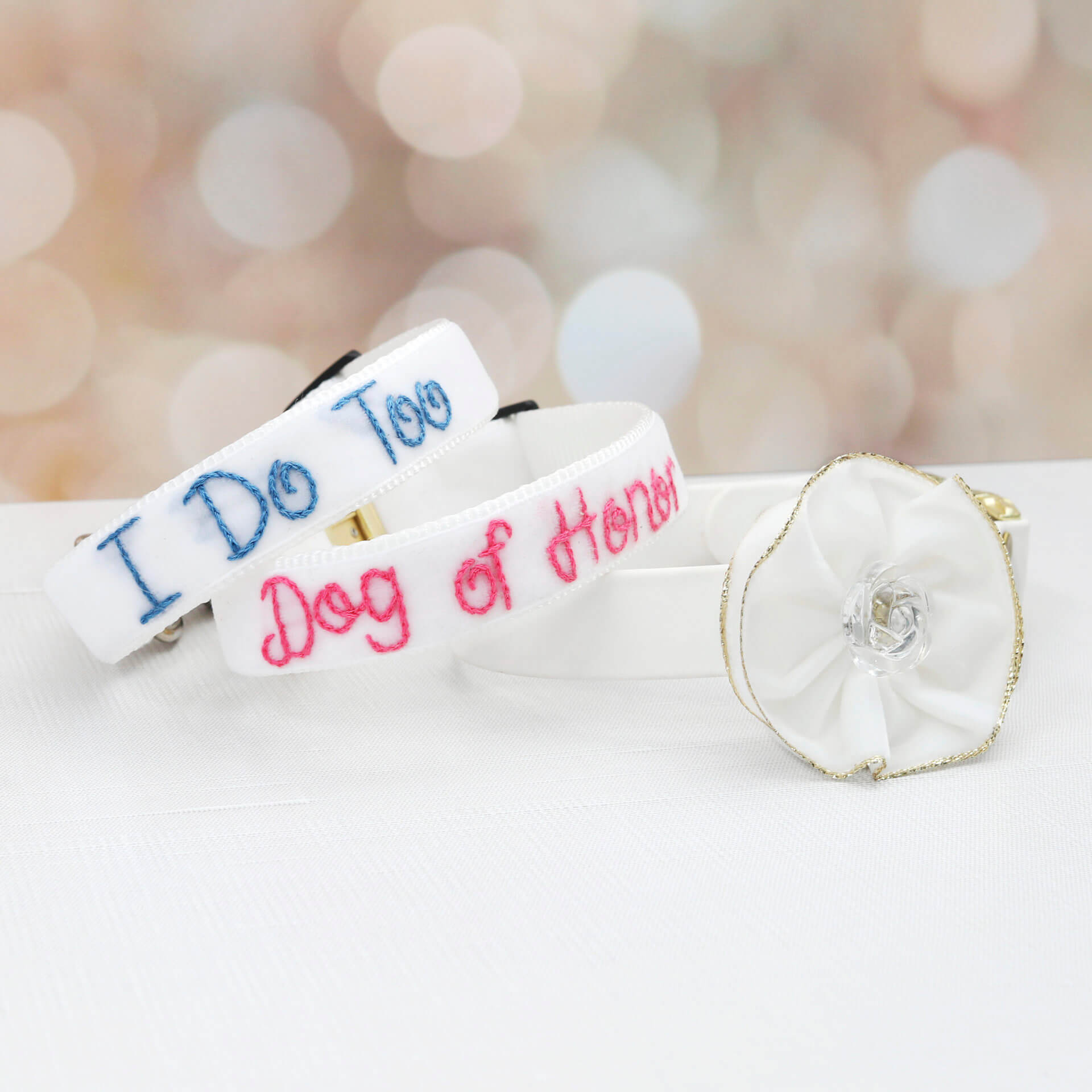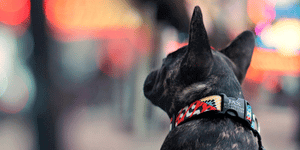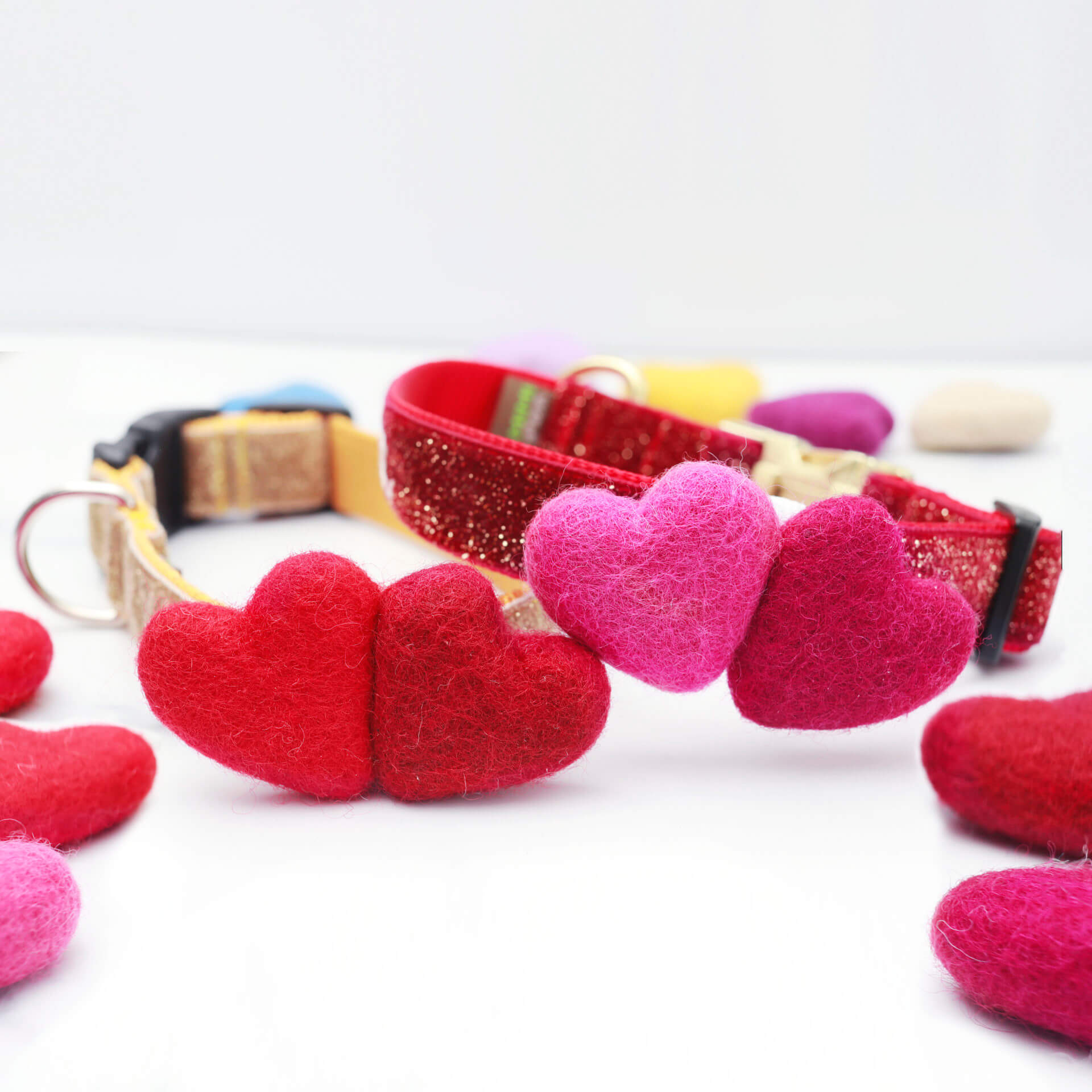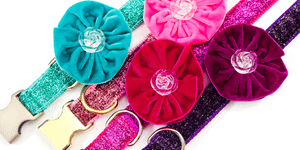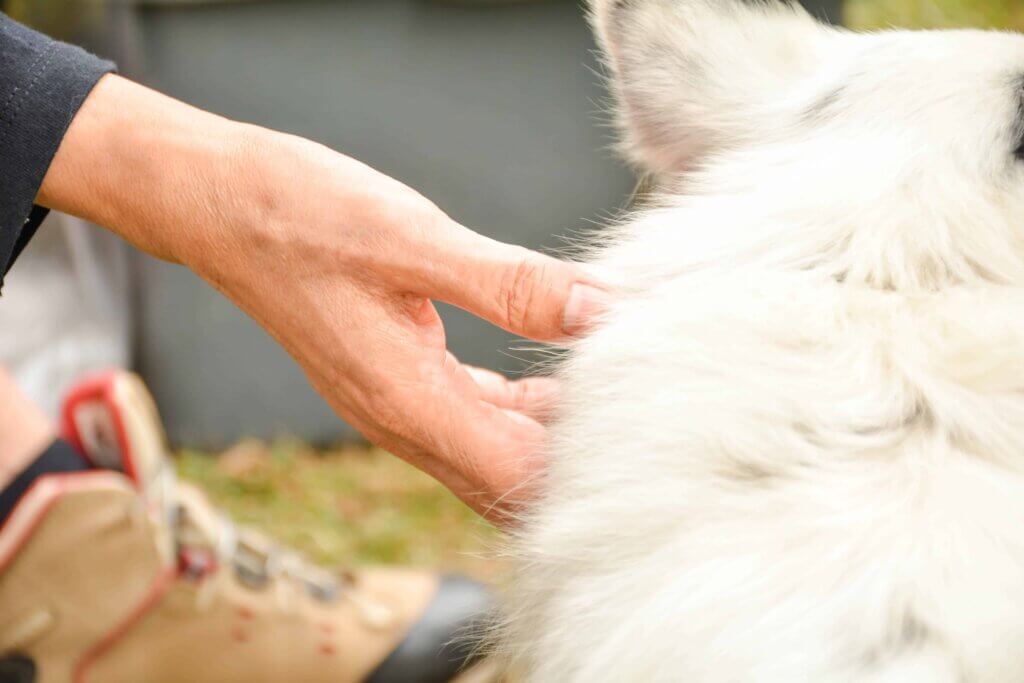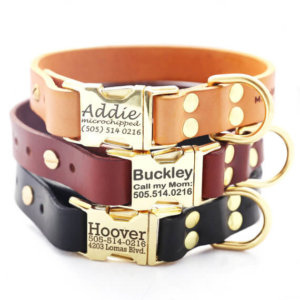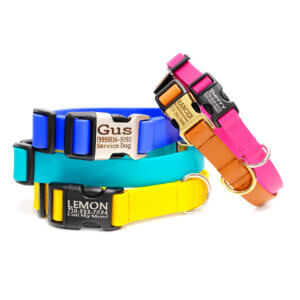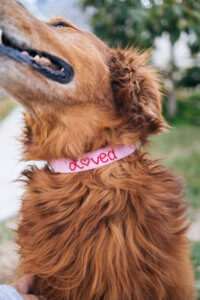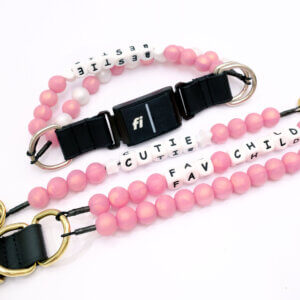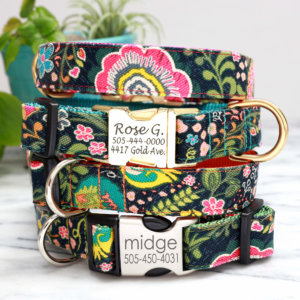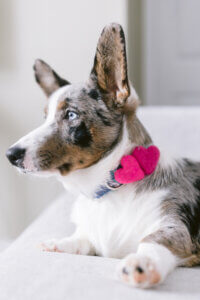Blog
Dog Collar Rash: Causes, Treatment, & Prevention (Skin Irritation, Infection & Chaffing)
Dog collar rash, also known as chafing, can be uncomfortable for your dog. It can be tempting to find alternate, short-term solutions, like removing its collar. However, that won’t solve the actual issue and can potentially leave your dog in unsafe situations.
This guide will advise on common causes, treatment, and prevention for dog collar rash on their neck.
What Does Dog Collar Rash Look Like?
Dog collar rash usually presents as red, inflamed skin. It can be painful for a dog and cause issues like itchiness, flaking, and hair loss.
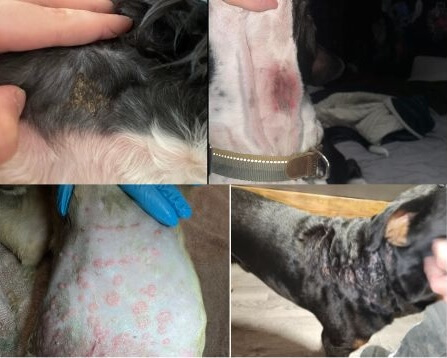
Common Causes of Dog Collar Rash
(The Collar Is Usually The Culprit)
Collar Doesn’t Fit
Collars must be sized correctly for the dog’s weight and fur thickness. When a collar is too tight, the contact points can dig into the dog’s skin, causing friction. This friction can lead to skin irritation and, eventually, bigger issues caused by exposure.
Some collar types can dig into your dog’s neck. For example, Fi Collars need proper sizing, lest they become too tight. Pronged collars, made of metal, are designed to tighten around a dog’s neck. This can cause damage to the windpipe and skin.
Oh, and don’t assume that a collar that is too big is good for your dog. The edges constantly touching the skin instead of laying flat can cause irritation.
Collar Material Sensitivity
Some dogs have metal allergies, which is problematic since many collars have metal rings or tags. Fabrics like cotton, hemp, or micro-fibers are less likely to cause problems. Some synthetic collars like nylon and polyester can cause skin allergies. We’ve found that BioThane® causes minimal skin irritation because it’s waterproof and is an excellent choice for pets with skin allergies. Not only is the material waterproof, but it will also resist bacteria and mold growth.
Read: Best Collars For Sensitive Skin
Other Causes Of Dog Collar Rash
- Allergies: Various conditions caused by hypersensitivity of the immune system to typically harmless environmental substances. Possible allergens include metals such as nickel, cheap leather, abrasive webbing, and low-quality PVC.
- Fleas: Fleas can cause itchiness, skin infections, and allergic reactions. They can also transmit diseases and parasites, like tapeworms, impacting overall health and comfort.
- Fungal/Bacterial Infections: Moisture or shampoo residue trapped under the collar can cause fungal or bacterial infection. A vet can perform a skin scraping to identify the exact cause. You can treat this issue with medicated shampoo from the vet.
- Acute Moist Dermatitis: Also known as hot spots are inflamed, red, and moist skin lesions in dogs. They are caused by excessive licking, scratching, or chewing due to allergies, infections, or irritants.
- Endocrine Disorders: Endocrine disorders are hormonal imbalances affecting glands like the thyroid, adrenal, and pancreas. Common causes include genetics, tumors, or immune-mediated damage.
- Electronic Collars: If worn for too long, electronic collars can cause pressure necrosis or pressure sores.
- Pyoderma: Pyoderma is a bacterial skin infection in dogs characterized by pustules, redness, and itching. Allergies, parasites, or underlying health issues often cause it.
Fact: Some breeds have worse skin issues than others. Pit bulls have a lot of skin irritations and reactions.
Dog Collar Rash Symptoms
- Red, bumpy skin
- Dandruff or flakes of skin in your dog’s fur
- Hot spots
- Hair loss (alopecia)
- Excessive scratching and chewing
- Hives (urticaria)
- Mites (cheyletiellosis), also called walking dandruff
- Swelling or puffiness around the neck area
- Scabs or crusty patches on the skin
- Discharge or pus from open sores
- Odor from the affected area
- Changes in skin color (hyperpigmentation)
- Thickened or hardened skin
- Bleeding or raw patches on the skin
- Reluctance to wear the collar or signs of discomfort when the collar is put on
Diagnosing Rashes on Dogs
To figure out the best treatment, you need to know what’s causing the rash in the first place.
Vets determine the cause of a rash on a dog through a combination of methods. They start with a physical examination and review the dog’s medical history.
- Skin Scrapings: Collecting skin samples to check for mites, mange, or other microscopic parasites causing the rash.
- Cytology: Examining cells from the skin to identify bacterial or fungal infections and inflammation.
- Fungal Cultures: Testing skin samples for fungal infections like ringworm, which can cause rashes and lesions.
- Allergy Testing: Using blood tests or intradermal skin tests to identify environmental or food allergies contributing to the rash.
- Blood Tests: Checking for systemic conditions like hormonal imbalances or autoimmune diseases that could manifest as skin rashes.
- Biopsy: Removing a small skin sample for histopathological examination to diagnose conditions like cancer or chronic dermatitis.
- Patch Testing: Applying potential allergens to the skin to observe reactions and identify contact dermatitis causes.
- Bacterial Cultures: Growing bacteria from skin samples to identify specific strains causing infection and determine appropriate antibiotic treatment.
A vet will likely start with a skin scraping, as it quickly identifies common parasites like mites or mange that cause rashes. The most likely causes of a dog collar rash include allergic reactions to materials, bacterial infections from moisture, and friction or irritation from the collar itself.
Treatments For Dog Collar Rash
There are various at-home and veterinarian prescribed treatments for dog collar rash.
What It Treats: Friction, dirt, and debris accumulation.
How It Works: Regular grooming keeps the coat and skin clean, reducing irritation and preventing infections.
What It Involves: Regular brushing, especially around the neck area, using grooming tools like brushes and combs. Keeping the collar area clean and dry.
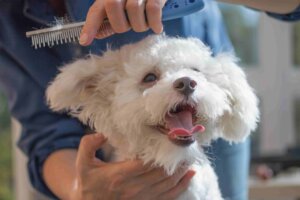
- What It Treats: Allergic reactions, skin irritation.
- How It Works: Oatmeal soothes irritated skin and reduces inflammation.
- What It Involves: Bathing the dog with an oatmeal-based shampoo or adding colloidal oatmeal to the bathwater. No prescription needed, just an oatmeal bath product.
- What It Treats: Bacterial or fungal infections.
- How It Works: These products contain antibacterial or antifungal agents that target and eliminate infections.
- What It Involves: Washing the affected area with medicated shampoo or applying medicated creams, ointments, or sprays directly to the rash. Products may require a vet’s prescription.
- What It Treats: Allergic reactions, inflammation.
- How It Works: These medications reduce itching and inflammation, providing relief and promoting healing.
- What It Involves: Oral or topical medications prescribed by a vet, such as corticosteroids or other anti-inflammatory drugs.
- What It Treats: Self-inflicted irritation from scratching or licking.
- How It Works: Prevents the dog from further irritating the rash by blocking access to the affected area.
- What It Involves: Wearing an E-collar around the neck until the rash heals. Available at pet stores or through a vet.
- What It Treats: Allergic reactions.
- How It Works: Antihistamines block the effects of histamine, reducing allergy symptoms like itching and swelling.
- What It Involves: Oral antihistamines prescribed by a vet, such as Benadryl, tailored to the dog’s weight and specific allergies.
- What It Treats: Parasites like mites or mange.
- How It Works: Identifies the presence of microscopic parasites that cause rashes.
- What It Involves: A vet collects skin samples and examines them under a microscope. If parasites are found, treatment may include medicated baths or oral medications.
- What It Treats: Contact allergies.
- How It Works: Determines specific allergens causing the rash by observing skin reactions to potential allergens.
- What It Involves: Applying small amounts of potential allergens to the skin and monitoring reactions. Treatment involves avoiding identified allergens and using hypoallergenic products.
Preventing Dog Collar Rash
Preventing dog collar rash starts with making informed decisions about what your dog wears, it’s lifestyle, and grooming.
- Buy a Higher Quality Collar: High-quality collars use gentle materials, ensuring proper fit, and reducing friction, which helps maintain your dog’s skin health and overall comfort.
- Try A Biothane Collar: Biothane collars are completely non-toxic and safer than many other collar options. Their smooth, flexible surface prevents pulling on your pet’s fur and avoids scratching sensitive skin. Additionally, Biothane dries quickly, helping to prevent rashes, infections, and irritation. The polyester material used in Biothane is both non-allergenic and hypoallergenic, making it ideal for dogs with sensitive skin or allergies.
- Regularly Check Collar Fit: Just as we outgrow clothing, dogs will eventually outgrow their collars. For puppies, check their collar and neck every month. For fully grown dogs, check every six months. Of course, do quick spot checks between those times.
- Give Your Dog’s Neck a Break: Give your dogs neck a break by using a harness on walks. Chose safe times to take their collar off, but don’t make it too regular of a habit.
- Keep Collars Clean and Dry: For daily walks, consider using a 1″ Biothane collar, but remove it once you’re home. Ensure the collar is cleaned weekly. Use a harness specifically for hikes, and wash it after each use to keep it free from dirt. To prevent skin irritation, keep your dog’s neck area dry and clean. You can use dog-specific cleaning wipes for spot cleaning, especially if irritation tends to be a regular issue.
- Rotate Collars: High-quality dog collars can last for years, but cheaper collars may only last weeks or months.
- Padded Dog Collars: Padded dog collars provide cushion between your dog’s neck and collar. This benefits dogs that are prone to neck chafing and rubbing on sensitive skin.
- Brush Their Neck: We suggest taking off your dogs collar and brushing their neck multiple times a week.
Dog Collar Materials For Sensitive Skin
Leather collars are made of natural materials that are great for sensitive skin. Quality leather collars are durable, meaning they adapt well to the preferred fit.
We’ve found that BioThane® causes minimal skin irritation because it’s waterproof and is an excellent choice for pets with skin allergies. Not only is the material waterproof, but it will also resist bacteria and mold growth.
